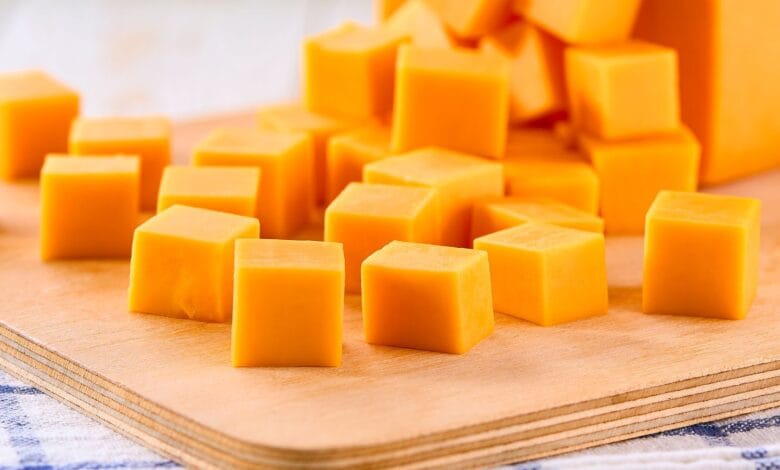The surprising difference between medium and sharp cheddar cheese and when it matters

Weekly grocery shopping is like getting a master’s degree in marketing. Food terms such as ‘light’, ‘natural’ and ‘part of a balanced breakfast’ can be found on almost every label. How do you know which ones have some basis in fact and which ones are just fluff?
It starts with learning a little more about the companies that make your favorite products. That’s why I said this Jill AllenA certified cheese judge and director of product excellence for the Tillamook County Creamery Association, he explained to me what the terms “mild,” “medium,” “sharp” and “extra sharp” on a pack of cheddar cheese mean. Spoiler alert: Not so much depending on the brand.
There is no law governing how cheesemakers can apply these words to their labels, so there is no consistency in what customers can expect from one company to another.
What does the cheddar cheese label actually mean?
Cheddar cheese is made with a few simple ingredients: cultured milk, salt, enzymes, and annatto for coloring. “I would say the fifth factor is time,” Allen says. The longer a cheese ages, the more its flavor, texture, and aroma evolve and change. As the aging process extends from months to years, crystallization increases and the flavor becomes more pronounced.
Here are the pitfalls: Even if manufacturers don’t want to wait months or years to sell so-called sharp cheddar, they don’t have to. To save on overhead, Allen says, some brands will simply buy milk cultures that are imbued with “sharper” flavors, or more sour aromas, to imply a ripening process that hasn’t actually gone through. Because it’s a young cheese, it has a lot of moisture and doesn’t have the crystalline structure or slightly crumbly texture of long-aged cheddar cheese.
Simply Recipes / Tillamook
What I Learned About My Favorite Cheddar Cheese Brand
“I think it’s important to give people the flavor of real cheddar when it’s ripening,” Allen says. For example, in Tillamook, each cheese term is associated with an actual unit of time.
- Medium: Aged for at least 60 days
- sharp: Aged for at least 9 months
- Extra sharp (yellow): Aged for at least 15 months
- Extra sharp (white): Aged for at least 2 years
In the case of Tillamook, the 60-day minimum threshold is not arbitrary. It shows the government one big thing do Regulations in the cheese making process: use of unpasteurized milk. Although Tillamook’s milk is heat-shocked, it is not fully pasteurized and must follow federal laws regarding raw milk (even though it is not raw milk). The law requires cheese to be stored at a temperature of at least 35 degrees Fahrenheit for a minimum of 60 days.
In any age group, the phrase “at least” indicates that the cheese has been cut and prepared for sale within 30 to 60 days of that period. Therefore, a medium cheddar can be anywhere between 60 and 120 days old. Still, Allen says the series is “consistent in functionality, meltability, spread, flavor and texture whether eaten cold or warmed.”
“That’s very important to us,” she added.
As for why the extra sharp thresholds for yellow and white are different, well…that answer seems to have been lost over time.
“I’ve been at Tillamook for about 25 years, and no one knows why,” Allen admits. “To be honest, I really think it’s to provide a different[service]. It’s just another element to make it a little different.” (Just to be clear, there’s no real difference between yellow and white cheddar cheese.)
In a world where deceptive marketing tactics are rampant, it’s nice to know that at least one item in the dairy case appears to be held to transparent standards. Are you tempted to reach out to other favorite brands to double-check what the terms on their labels actually mean? You never know what you’ll learn.
2025-10-27 18:01:00




